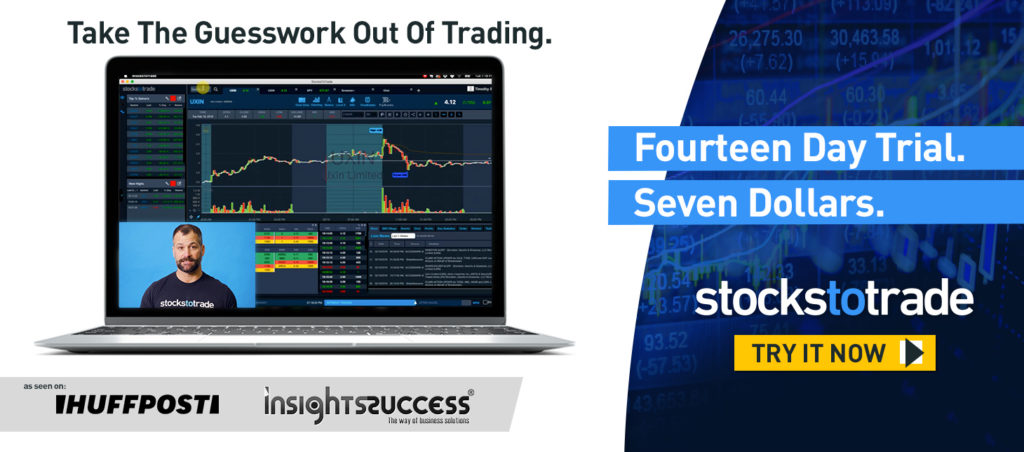You’ve probably heard the term ‘IPO’ thrown around a lot lately. The 2019 financial news cycle is dominated by IPO announcements from major startups like Uber and Lyft.
But what is an IPO? And what does it mean for a trader like you?
If you don’t know what an IPO is or why it’s such a significant event, now’s the perfect time to get on top of it.
We’re seeing some crazy IPO action this year! So don’t delay — educate yourself. Let’s take a look at what IPOs are as well as a few to track on your watchlist.
Table of Contents
What Is an IPO?
IPO stands for initial public offering. That’s probably enough to give you a good idea of what it is…
In short, it’s a company offering stock shares to the public for the first time. It means that any trader or investor can become a shareholder of a company. And the shares for the company will now be listed on public exchanges like Nasdaq and the New York Stock Exchange.
Before going public, a company is considered private. Meaning, all of their funding has come from early private investments. This could be from the company founders, friends, family, venture capitalists, and so on. Basically, anyone except public traders.
Until a company goes public, the only way to invest is if you approach the owners and offer to invest or if they approach you to invest.
Those are the IPO basics in a nutshell.
So why would a company want to go public? Let’s check out a few reasons.
Why Have an IPO?
The main reason most companies decide to go public is to raise more money.
Private companies can struggle to generate capital through private investors. It’s not always easy for founders to find investors while the company’s in the early stages of development. It’s a risk, and not every investor is willing to bite.
And as companies grow, they can become so big that they simply can’t sustain on private investments anymore.
In other cases, a company might go public to raise money to pay off debts. Investors don’t just make donations out of the kindness of their hearts — they expect a return. An IPO can be a way for companies to fund their growth and pay back private investors.
Last, but not least, an IPO is sometimes a last-ditch effort to keep a dying company afloat. Companies that strike out with private investors AND have major cash-flow problems often turn to the public as a last resort.
An IPO can be a chance for companies to generate capital by selling shares to traders and investors around the world.
IPO: Pros and Cons
OK, so now you understand why a company might go public. But what does it mean for you as a trader? What are the advantages and disadvantages of IPOs for traders?
First, let’s look at the pros:
- Hype: IPOs can generate a lot of hype from traders. And if there’s enough hype, it can drive stock prices through the roof. Savvy traders can learn to ride the momentum.
- Getting in early: If you expect a company’s value to continue to rise, an IPO can give you the chance to get in early while prices are still low.
- Sympathy plays: Sympathy plays are a way to play stocks related to companies making a public debut. Day traders can use this strategy to trade IPOs indirectly — they watch for moves within the same industry or sector.
- Analysis: Trading IPOs isn’t for everyone, but don’t necessarily ignore them. Tracking them can come with benefits, especially as you consider the big picture and future moves. Make IPOs part of your analysis, which is key to smarter trading. One company’s IPO can give you clues as what to expect from a similar IPO in the future.
What about the cons? Here are a few reasons you should be cautious of IPOs:
- Hype: Yep, hype is both a pro and a con. Overhyped IPOs can be very dangerous. It can easily lead to a quick artificial increase in a stock’s price only to be followed by plummeting share prices.
- Volatility: You can do all the analysis and prep work you want, but IPOs are always susceptible to extreme volatility, and volatility can be the enemy of risk management (although some traders love it).
- Stagnation: Price stagnation isn’t the worst case scenario, but it’s not ideal for traders looking for quick returns.
- Unclear motives: It can be hard to tell in some cases if an IPO is a good or bad sign for a company’s future. Companies that go public because of rapid expansion can create opportunities. Dying companies looking for some quick financing … not so much.
All things considered, IPOs are, at the very least, an exciting news catalyst that should draw your attention. Even if you decide to pass on the opportunities they present.
With that said, let’s take a look at few of the IPOs dominating the news this year…
Trending IPOs
You know what an IPO is, but why are IPOs such a hot topic right now?
2019 is buzzing with IPO news from major tech companies like Uber, Lyft, Pinterest, and many more.
From trading these IPOs directly to making sympathy plays, IPOs can create countless trading opportunities — especially when they’re coming billion-dollar tech companies.
Let’s take a look at some of the trending IPOs that you should be watching in 2019.
Uber IPO
You probably already know this rideshare company that gives millions of users around the world access to cheap rides on demand.
Uber filed for its IPO earlier this year and plans to go public in 2019.
After Toyota invested in the company last year, Uber received a private valuation of over $75 billion. With plans to sell shares at somewhere between $44 and $50 at its IPO, Uber would be valued at just under $90 billion.
This sets up Uber to have one of the biggest tech IPOs of all time —- sitting just behind Alibaba as the biggest IPO of the last five years.
News this significant should be on every trader’s radar. Keep an eye out in the coming months for more info regarding Uber’s IPO.
Lyft IPO
Lyft’s IPO already came and went. Miss out on this one? Don’t sweat it — there’s an awesome opportunity to learn here. Uber’s main competitor is a great example of some IPO pros and cons.
The bad: Traders had huge expectations for Lyft’s IPO. And with an expected valuation of $20 billion, it’s no wonder why people were so excited by this announcement.
Unfortunately, for Lyft — and traders — this IPO didn’t quite live up to expectations. It started strong … then stock prices took a dip.
Like I said, overhyped IPOs have a tendency to rise and fall, and that’s exactly what happened with the Lyft IPO.
The good: While traders who bought shares in Lyft might’ve been disappointed, people who made sympathy plays before the IPO likely found better positions.
After Lyft’s IPO was announced, smaller companies in the rideshare space were positively affected. As a result, savvy traders found some solid opportunities before Lyft sold its first public share.
The circumstances surrounding Lyft are a perfect example of the advantages and disadvantages of trading an IPO.
Airbnb IPO
Airbnb — if you haven’t used it, you’ve at least heard of it by now. The home rental business has blown up in recent years as travelers around the world use it to find accommodations on the cheap.
Adding to the list of major companies going public in 2019, this multibillion-dollar business hopes to go public later this year. Airbnb’s managed to keep most of the specifics out of the news cycle for now, so there’s not much to talk about.
That said, a company this big making plans to go public is major news. Watch out for more about this IPO as the details continue to unravel.
Pinterest IPO
With around 250 million active monthly users, Pinterest is a major social media network with strong monetization practices.
Pinterest’s 2018 revenue grew by an estimated 50% to around $700 million, and the company has a projected valuation of about $12 billion.
I’m keeping an eye on this one, personally … learn more about the Pinterest IPO here.
Upcoming IPOs
Those are some of the biggest IPOs in store for 2019, but there are plenty of other notable ones expected to come, including:
- Slack: The messaging app has been considering going public since 2017 and is finally expected to do so. In 2018, Slack received a valuation of over $7 billion.
- Postmates: In spite of competition from companies like GrubHub, DoorDash, and Amazon, Postmates continues to thrive. With a valuation of over $1 billion, you might want to watch this IPO.
- Palantir: This one might be new to you. It’s not something most people use in their everyday life, but this software company’s data mining and analytics services can be used to counter anything from fraud to terrorism. With a $41 billion valuation, Palantir could be the 2019’s biggest IPO.
Other major companies like Robinhood, WeWork, Asana, and more are projected to go public this year.
Keep your eye out for announcements from major companies like these and be prepared to make moves when the time comes.
Take Advantage of StocksToTrade Features
With major IPOs on the horizon, you need the best tools at your disposal to help you identify new opportunities, create watchlists, and develop a solid trading strategy.
StocksToTrade Pro is an industry-leading stock screener that can help you do all these things and more.
You’ll get access to watchlists, news updates, indicators, quotes, and guidance from me — the lead trainer at StocksToTrade.
You can also collaborate with other traders in our StocksToTrade network to learn new ideas and take your trading strategies to the next level.
Don’t miss out on these amazing features. Sign up for the 14-day, $7 trial today to prepare for upcoming IPOs!
The Bottom Line
2019 is buzzing with IPO news from major companies and tech startups.
It can be an opportunity to trade … but to do so, you need to understand IPOs, how you can approach them, and the risks associated with them.
With several major IPOs set to come in the following months, now’s the perfect time to better know these companies and polish your trading strategies.
(Hint: Need practice? Check out STT’s paper trading feature to help you hone your skills!)




